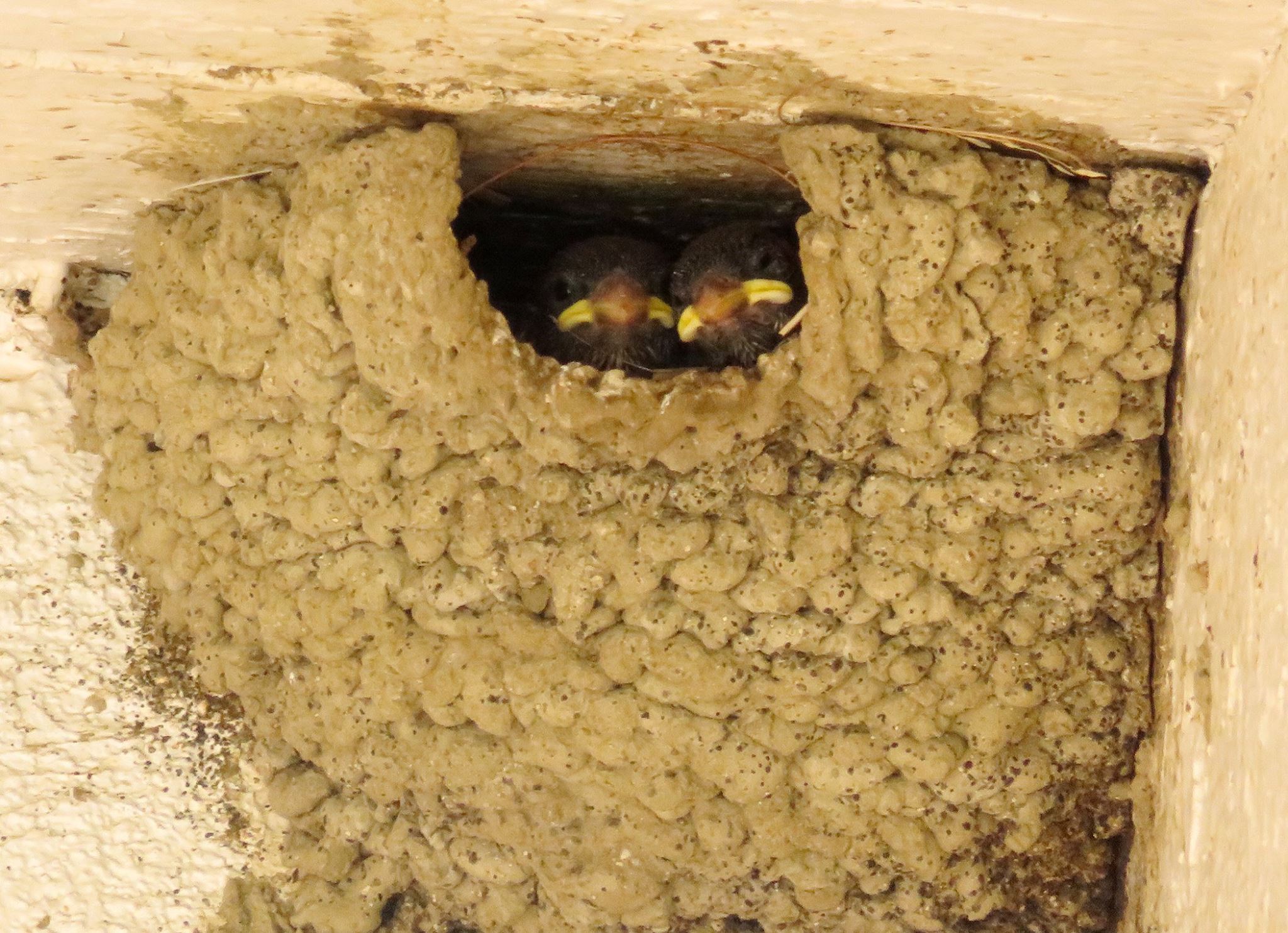“In all things of nature, there is something of the marvelous.”
– Aristotle
 Insects belong to the phylum arthropoda (arthropods). Arthropods make up the largest number of animal species in the world, far outnumbering mammals and birds.
Insects belong to the phylum arthropoda (arthropods). Arthropods make up the largest number of animal species in the world, far outnumbering mammals and birds.
The characteristics of an arthropod is that it has an external skeleton, segmented legs and regional segmentation of the body. Arthropods are found on virtually every continent and are divided into a number of different classes. The three major ones are crustacea, including lobsters, shrimp and crab – which in addition to their 10 legs are also delicacies when prepared properly. The next group are the arachnids or spiders, which have eight legs, followed by insects, which have six legs (three on each side).
At least this is what has been taught in science classes at all levels of education.
I’m going to focus on insects that appear to have only four legs, or two pair.

Fig. 1: The banded alder borer is a long-horn beetle whose larva are particularly destructive to alder, ash and other hardwood trees. The three pair of legs symmetrically placed on either side of the body are easily seen and counted. This has been found in the Newhall area.
Indeed, the Bible (Leviticus) also states that some insects have only four legs, and those with only four legs are also good to eat. If the legs are small, they can be difficult to see, but if they are large, it’s easy (Figs. 1 and 2).
Both the beetle (Fig. 1) and the butterfly (Fig. 2) have three pair of legs that are easily seen and counted. However, Figs. 3 and 4 are two butterflies that appear only to have two pair of legs.

Fig. 2: One can easily count three legs on the Western pigmy blue butterfly. There are three more on the other side of the thorax for a total of six.
There is a large group of butterflies, commonly the larger butterflies, that appears to have only two pair of legs. These are classed in the group nymphalidae and are also known as brush-footed butterflies. They actually have three pairs of legs, but the front pair are modified for smelling. They are small and kept tucked up against the body, making them difficult to identify. They have brushes on their feet that are sensory organs for smell. As such, they smell both with their antenna and with their front pair of feet.
They will alight on a leaf of the host plant and gently tap the leaf, triggering the release of chemicals which they detect with the sensors in their feet. This way they can determine if the plant – or that particular leaf, and by inference the entire plant – is healthy and good to lay its egg on or, in the case of a flower, to seek nectar.

Fig. 3: A Lorquin’s Admiral sitting on
a leaf appears to have only two legs on one side.
This behavior reminds me of going grocery shopping with my mother when I was a little boy. When in the produce section, she would gently squeeze the fruit or vegetables and also smell them to determine which was appropriately ripe, as she wanted only the best for her family.

Fig. 4: A painted lady also appears to have
only two pair of legs.
In the case of other insects, their forelegs, the front pair, have been modified for other purposes so they use only the two hind pair for walking. One classical example is the praying mantid, whose forelegs have been modified into pincers to help it capture its prey (Fig. 5).
When the Bible was written, the different animal phyla had not yet been identified. But early on, the Bible states there were four-legged insects. “Yet these may ye eat of every flying creeping thing, that goeth upon all four, which have legs above their feet, to leap withal upon the earth; (including) the locust … the beetle … and the grasshopper after his kind” (Leviticus 11:21,22).

Fig. 5: This praying mantid nymph is using its four hind legs to stand and balance while the forelegs have been modified into pincers to capture prey.
While the locust and grasshopper are now considered part of the same order of insects, such classifications did not exist in biblical days. Further, the biblical scholars considered only the legs to be the structures that were used for walking. Hence, the third pair of appendages that we now call legs and which were used for jumping were not considered to be legs.

Fig. 6: The “Mexican general” lubber grasshopper (locust) derives its name from the coloring that resembles a Mexican General’s uniform, at least at the time it got its name. It measures 2 to 3 inches and walks with only its two pair of forelegs.
Using the biblical definition, there were insects that had four legs, while there were other insects that had six legs. It should be noted that at least some of the insects with four legs were considered good to eat. There were interesting restrictions. If the insect was able to leap, it was OK to eat it, but others with four legs were not considered appropriate to eat.
Grasshoppers and particularly locusts can be quite large (Fig. 6). Lubber grasshoppers tend to be slow and easy to catch by hand, so it would not be difficult to catch a significant number to make a fine feast, if so inclined.
For an excellent video from the BBC on the power of grasshoppers’ hind legs and those of other jumping insects, check out http://www.bbc.com/news/science-environment-33334091, released earlier this year.

Fig. 7: The water strider’s four hind legs that dimple the surface to support the insect without breaking the surface tension of the water cast a shadow on the bottom of the pool so it appears to have only four legs. The front pair are smaller; they don’t touch the water and are used to capture prey. The antennae can be seen between the front pair of legs.
Many insects that inhabit a watery environment, either on top of the water (Fig. 7) or in the water (Fig. 8), appear to have only four legs, with the front pair having been modified for capturing food.
Although not a locust, the common name is multi-year locust. It lives most of its life under the ground as a larva feeding on roots. It is the cicada – the insect that makes the loud buzzing noise in the trees and is often difficult to see.

The giant water beetle has two very large pair of hind legs for propulsion through the water. The front pair have been modified into pincers to capture prey. This particular insect is male. It carries the eggs that have been deposited on its back by a female.
When it emerges, the larva digs its way out of the ground; climbs up a stalk or twig; sheds its outer skin, leaving a caste; and emerges as an adult. As a larva, the forelegs are modified for digging (Fig. 9). An adult cicada can spend as much as 17 years underground as a larva but usually has a shorter life, as shown in Figure 10.
To return to our biology textbooks, all insects do have six legs, but sometimes it is difficult to see them, and in some cases, they have been modified by evolution such that they are no longer serving the purpose of what we consider to be the purpose of legs (i.e., to use for standing and walking).

Fig. 9: The caste of a cicada larva that emerged
as an adult. Note the modifications of the front pair of legs.
Note: All images in this article were photographed by the writer except for the adult cicada, found in the Frazier Park-Lockwood Valley area. All were photographed in the Santa Clarita Valley except Fig. 6, which was spotted in Tucson. The giant water bug is a model on display in the riparian habitat of the Placerita Canyon Nature Center Museum.
Paul A. Levine is a docent-naturalist at Placerita Canyon Nature Center and an avid butterflier.

Fig. 10: The left forewing of this adult cicada is deformed, which is why it was on the ground to be photographed. The foreleg that had been modified while it was a larva now appears totally normal.
Like this:
Like Loading...
Related






 Tweet This
Tweet This Facebook
Facebook Digg This
Digg This Bookmark
Bookmark Stumble
Stumble RSS
RSS


















































REAL NAMES ONLY: All posters must use their real individual or business name. This applies equally to Twitter account holders who use a nickname.
1 Comment
The must be a correction, Levitius states four legged insects are an abomination which means we are NOT to eat a four legged insect!!!
Leviticus 11:23
[23]But all other flying creeping things, which have four feet, shall be an abomination unto you.